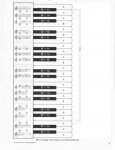Anyanka
Prolific poster
I don't have time today to go through and edit out all the unnecessary personal comments in this thread - please stop sniping at each other now!
In order for this thread to be useful to anyone, we need to clarify which version of the book is misleading, and ideally have a photo or scan of the 'offending' page, please. I don't see that as an attack on Karen Tweed (whom I know personally and admire greatly) or Dave Mallinson. As I said before, one of the books is very useful - the other less so. This forum does a valuable job by helping its users discuss the best learning aids. Let's keep it that way.
In order for this thread to be useful to anyone, we need to clarify which version of the book is misleading, and ideally have a photo or scan of the 'offending' page, please. I don't see that as an attack on Karen Tweed (whom I know personally and admire greatly) or Dave Mallinson. As I said before, one of the books is very useful - the other less so. This forum does a valuable job by helping its users discuss the best learning aids. Let's keep it that way.



